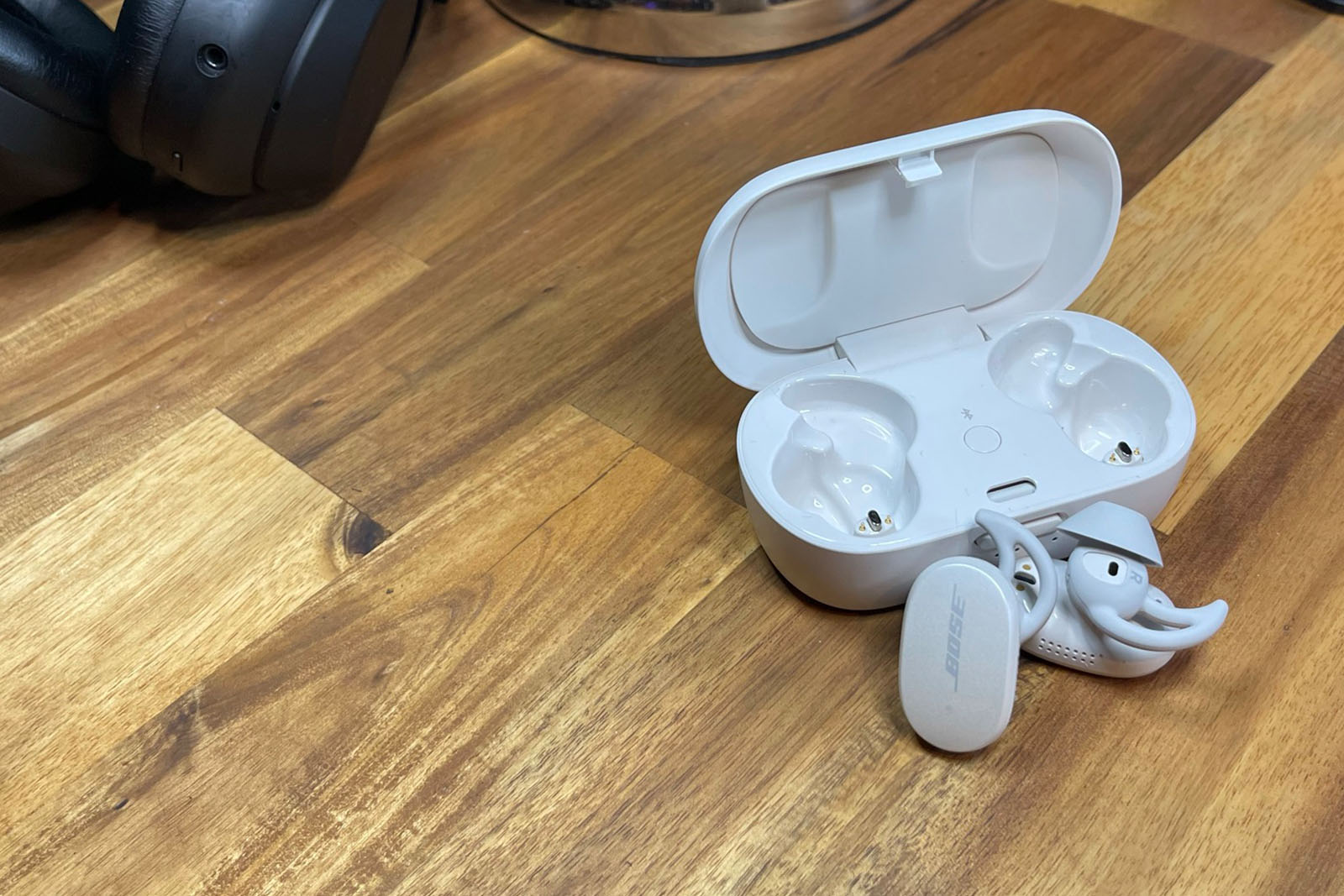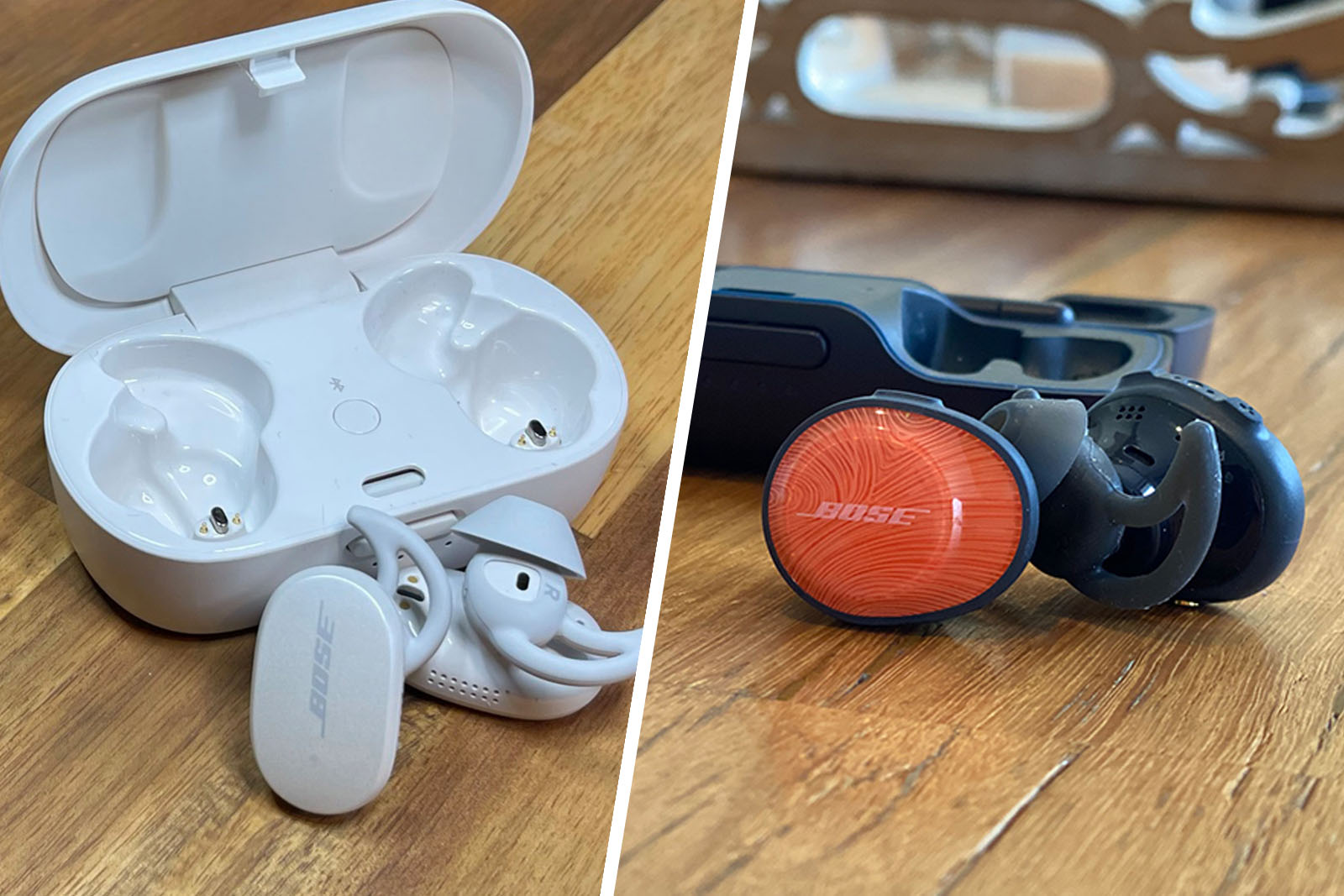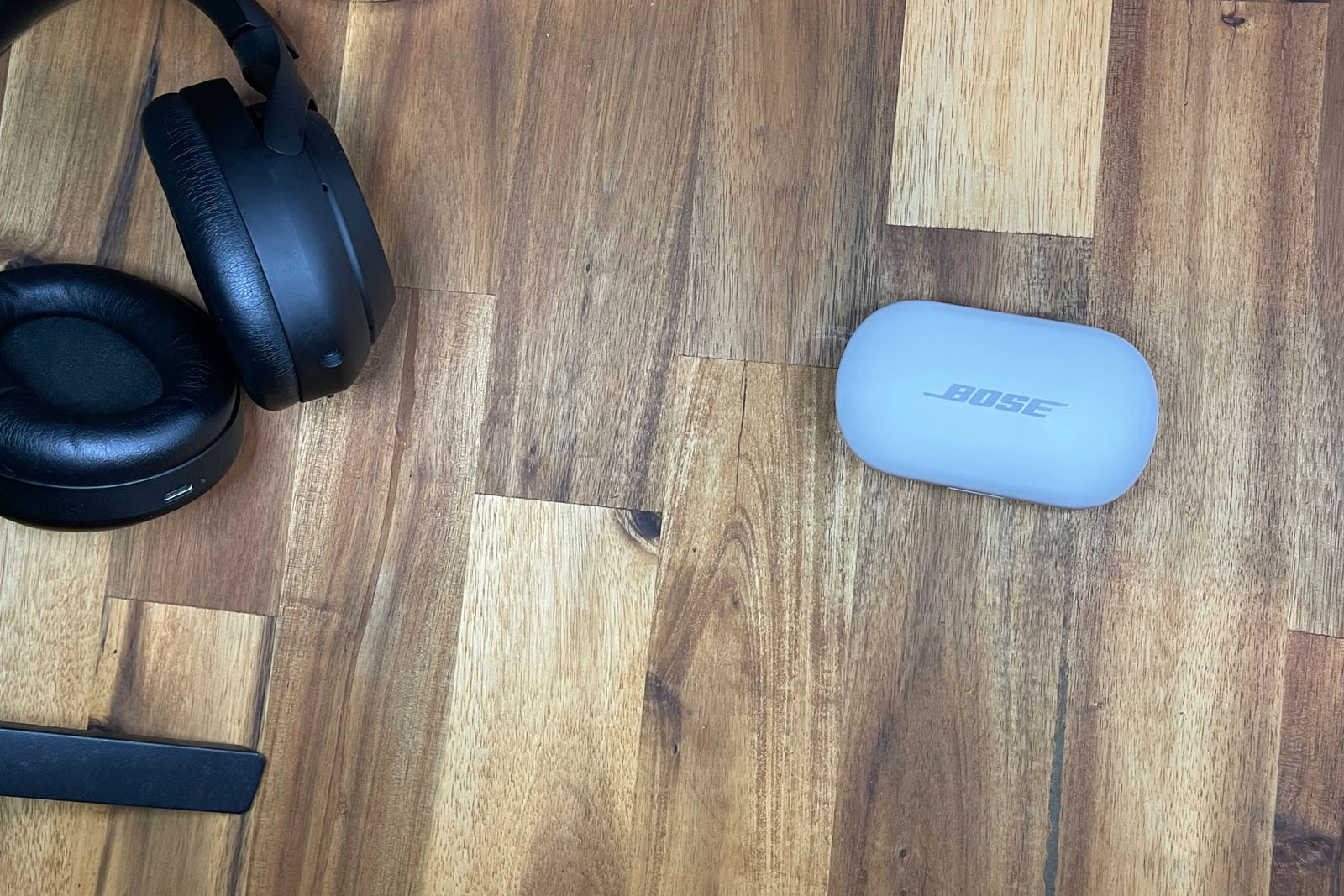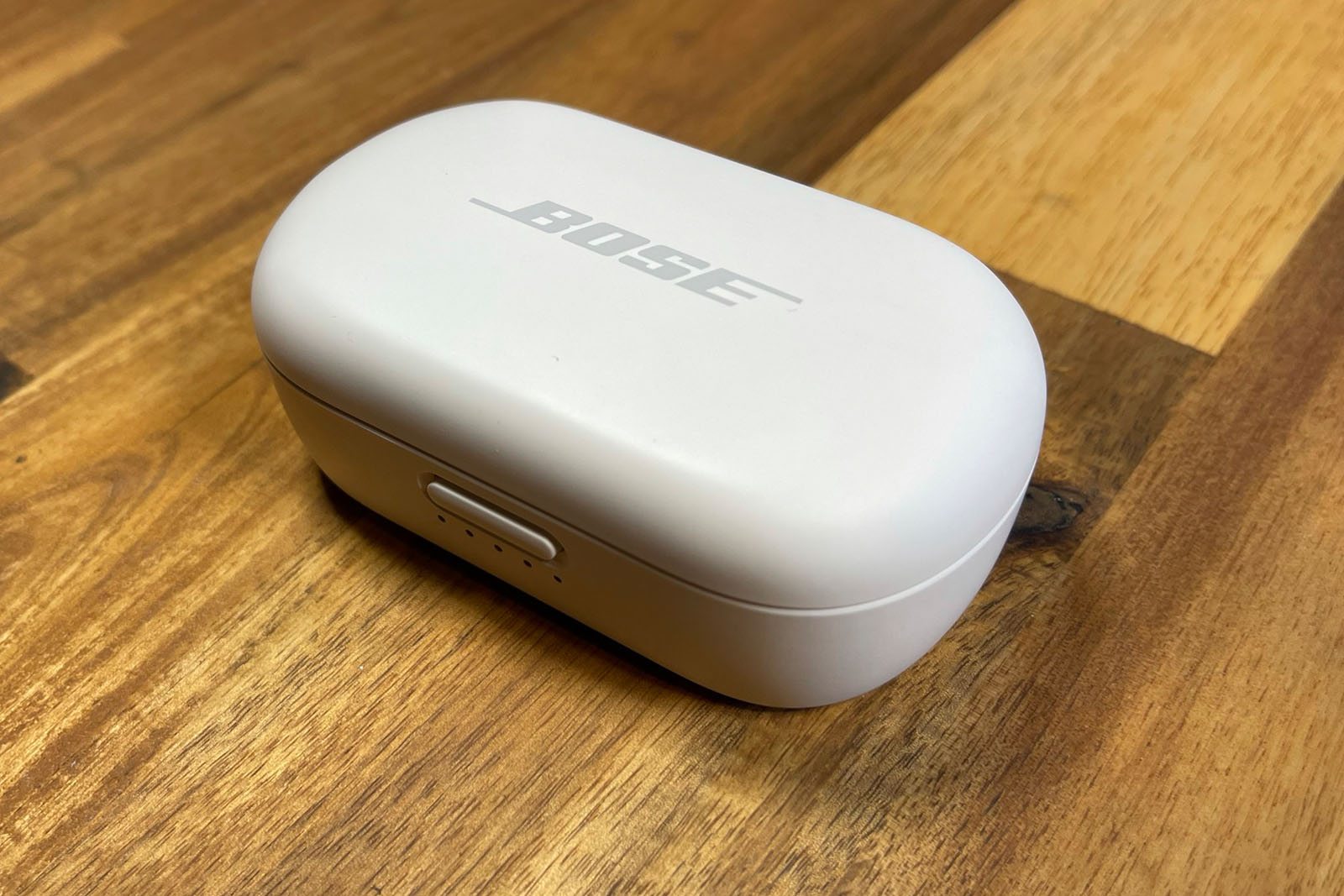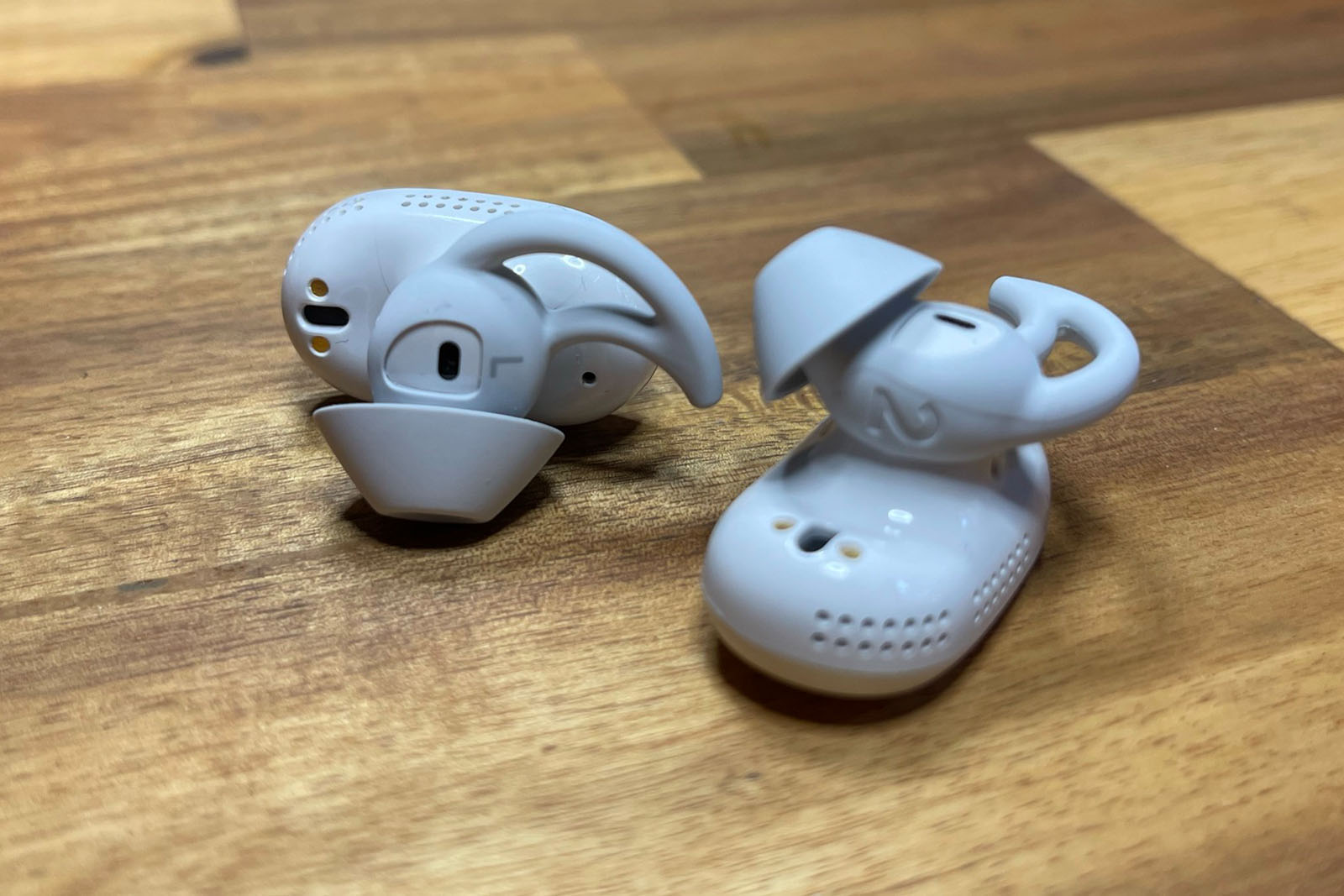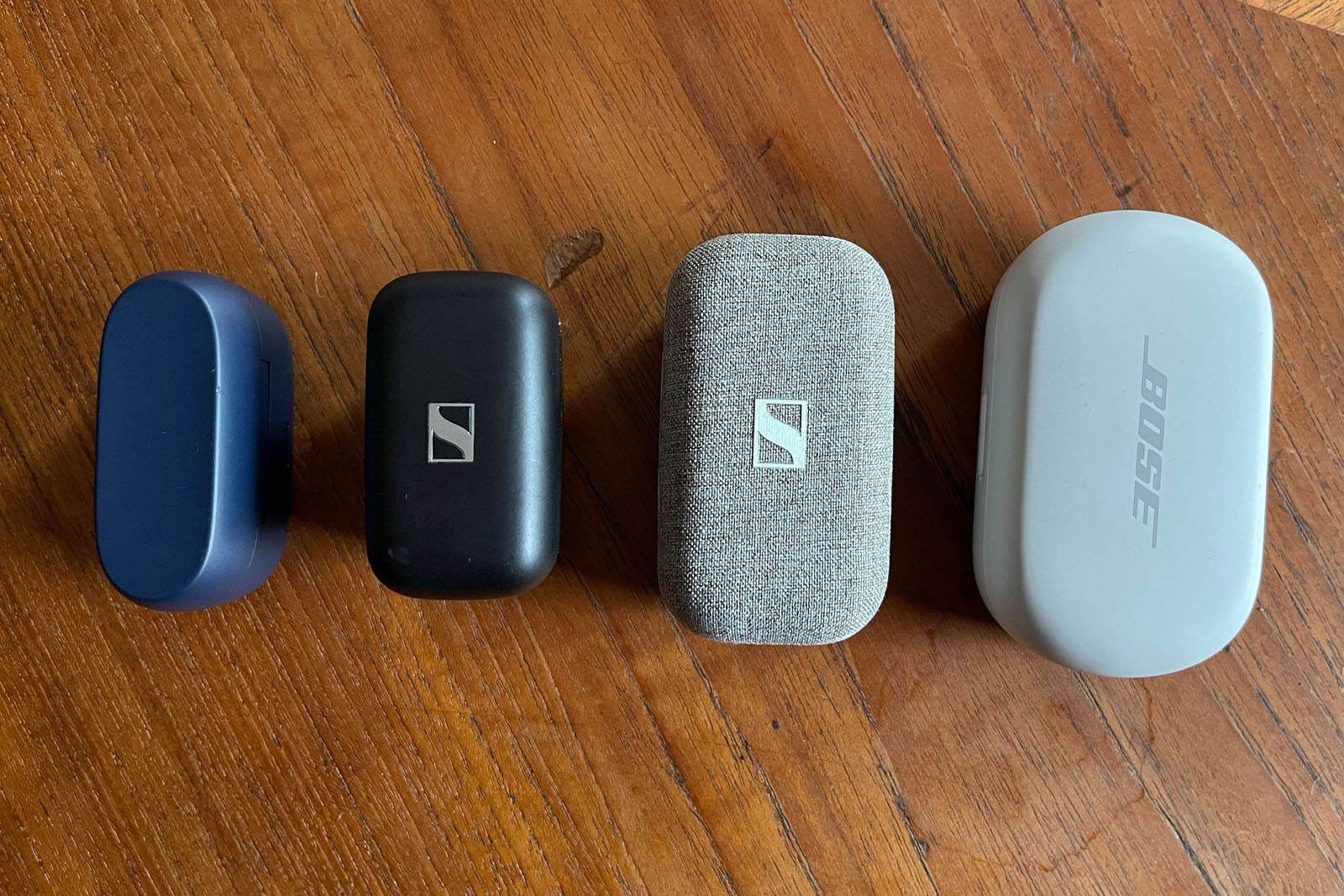Optus Mobile Review ALDI Mobile Review Amaysim Mobile Review Belong Mobile Review Circles.Life Review Vodafone Mobile Review Woolworths Mobile Review Felix Mobile Review Best iPhone Plans Best Family Mobile Plans Best Budget Smartphones Best Prepaid Plans Best SIM-Only Plans Best Plans For Kids And Teens Best Cheap Mobile Plans Telstra vs Optus Mobile Optus NBN Review Belong NBN Review Vodafone NBN Review Superloop NBN Review Aussie BB NBN Review iiNet NBN Review MyRepublic NBN Review TPG NBN Review Best NBN Satellite Plans Best NBN Alternatives Best NBN Providers Best Home Wireless Plans What is a Good NBN Speed? Test NBN Speed How to speed up your internet Optus vs Telstra Broadband ExpressVPN Review CyberGhost VPN Review NordVPN Review PureVPN Review Norton Secure VPN Review IPVanish VPN Review Windscribe VPN Review Hotspot Shield VPN Review Best cheap VPN services Best VPN for streaming Best VPNs for gaming What is a VPN? VPNs for ad-blocking Despite these improvements, the earbuds and the included charging case are still bulkier than what the competition provides, still don’t last as long and if you’re not a fan of the default EQ settings, there aren’t any in-app customisation options to tinker with. Overall, the QuietComfort Earbuds improve upon the SoundSport Free in almost every way but that still leaves Bose lagging behind the competition in a few key areas. Firstly, there’s comfort and aesthetic. The SoundSport Free’s activewear-adjacent design philosophy was garish and dated before its time. Not only that, but the buds themselves were uncomfortably large. The same went for their chunked-up charging case, which weighed in at a whopping 80g yet somehow only holds 10 hours of total charge and uses micro USB. Bose hasn’t completely redesigned the QuietComfort Earbuds but it has slimmed things down for a more subtle profile with muted colour options (Soapstone and Triple Black). The charging case is still larger than most but Bose has smoothed off the edges (like the SoundSport’s external hinge) and managed to shave off a few grams (76g), packed in more battery life to warrant the size and moved over to USB-C. The QuietComfort Earbuds are also Bose’s first real attempt at ANC (Active Noise Cancellation) in the true wireless space and it’s an outstanding first attempt (more on that in a moment). Here’s a spec comparison of the Bose QuietComfort Earbuds and the Bose SoundSport Free. Like many of our favourite in-ear wireless headphones, the QuietComfort Earbuds lean a little bass-heavy. It’s not quite as overwhelming as the Jabra Elite Active 75t but the key difference here is that Jabra lets you tailor the EQ settings or select from a handful of audio presets in the Jabra Sound+— the Bose Music app doesn’t offer any customisation. Thankfully, the default audio settings are otherwise phenomenal and will suit most people. The bass in the QuietComfort Earbuds is a little more refined than the Jabras. It can still overshadow the vocals and other low to midrange notes, leaving some tracks a little anaemic in sections, but in particularly busy tracks, the bass notes really shine through. It’s a similar story for high to midrange notes and treble. Listening to a track like The White Stripes’ “Blue Orchid”, you’ll notice a stark difference in how the crash cymbals sound during and outside of Jack White’s vocals. Without vocals, the tsh-tsh-tsh-tsh of the crash is crystal clear but it becomes a little muddy when the vocals kick in. Those are a few rare examples of where the audio starts to slip, though. For the most part, the QuietComfort Earbuds offer a very roomy soundstage for a pair of wireless buds and Bose’s Active EQ (while restrictive) does a bang-on job of dynamically adjusting bass and treble at different volumes. I may have done some serious damage to the old wing nuts over the years but with most earbuds these days, I set the volume to 100% when I’m working or focusing and the QuietComfort Earbuds allow me to do that without blowing out the bass. The Jabra Active Elite 75ts benefit a lot from their low-profile, lightweight design and water-resistance and for those reasons, I still think they’re the best pair of true wireless earbuds for most. But they aren’t the best-sounding wireless earbuds on the market. On the flip side of the coin, you’ll find Bose QuietComfort Earbuds, a pair of buds where the crystal-clear sound and top-tier noise cancellation make up for some less than ideal design choices. They’re still not the best for sound quality (that honour might go to Sennheiser’s True Wireless Momentum 2) but the balanced, out-of-the-box sound is only elevated by the QuietComfort Earbuds’ splendid active noise cancelling (ANC). Bose hasn’t just corrected course, it has earned its place amongst the highest-ranking true wireless earbuds for noise cancellation. The QuietComfort Earbuds are at least as good as Sony’s noise-cancelling efforts, maybe slightly better than the Apple AirPods Pro, and leagues ahead of a lot of competitors, including Sennheiser, Jabra and Audio-Technica. The problem with Sony’s WF-1000XM3s is that they’re getting a little long in the tooth. They only released back in 2019 but that’s a lifetime in the world of headphones and earbuds. There are already rumours swirling about the replacement WF-1000XM4s and if the current-gen over-ear equivalent is anything to go by, Sony’s next buds will likely reclaim their place atop the noise-cancelling throne. In the meantime, the Bose QuietComfort buds get to bask in that glory. The call quality with the Bose QuietComfort Earbuds isn’t perfect but things like wind interference no longer make as much of an impact. Whereas as a bit of wind used to render chat near-unintelligible in the SoundSport Free, wind just adds a bit of background noise now and is mostly cancelled out by the QuietComfort’s four microphones. Anecdotally, this becomes an issue when I’m at my climbing gym. My local gym is roughly 25 metres from the front door to the back wall. I usually leave my phone with my bag near the front door and climb with my wireless earbuds in. With the Jabra Active Elite 75t, I only really start to get interference at the very back wall but the QuietComfort Earbuds start to break up somewhere around the middle of the gym. I’ve also had the odd connection quirk, like music not playing through the buds, where the only solution is to put them back in their case and remove them again. Through everyday use, I’ve been charging the QuietComfort buds roughly once a week which is manageable and never really feels like a chore. If you’re commuting more than me, you might need to top them up more often, but a quick 15-minute charge will get you an extra two hours of battery life. That’s partly thanks to the fact that Bose has switched to USB-C (thank heavens) with its latest buds. To be fair, the micro USB-charged SoundSport Free buds released way back in 2017 when micro USB was more ubiquitous but we’re still happy to see the other side of it. The improved battery life is a welcome upgrade but it’s still not quite up to snuff with the competition. Even the sub-$200 Huawei FreeBuds 4i earbuds are packing 22 hours of battery (and in such a compact case). Again, that’s with the ANC switched off but it’s still a decent innings for such an affordable pair of buds. They’re comfortable and secure but, most importantly, they allow for a slimmer profile than the outrageous protruding mass of the SoundSport Free buds. I will say that small-eared folk will still find no joy with the Bose QuietComfort Earbuds. In the box, you’re given a selection of three silicon tip sizes and even with the smallest fit, one of my tiny-eared friends who shall not be named (so small) couldn’t get the QuietComfort tips far enough in for a secure fit. To be honest, it’s the same story with the charging case; an improvement on the SoundSport Free but still cumbersome. Bose has smoothed the edges of the QuietComfort case, resulting in a more pocket-friendly design but it’s still a huge unit when compared to more discrete examples, like the Jabra’s Active Elite 75t, Apple AirPods Pro or Galaxy Buds Live. The double-tap to play/pause seems especially hit and miss. The Bose SoundSport Free, for all their faults, had physical on-ear controls and while pivoting to touch might seem like an upgrade to some, it’s a step back for me, personally. There are far more elegant control solutions out there, such as the Jabra Active Elite 75t two-button scheme and, in the over-ear space, the digital crown on Apple AirPods Max.
